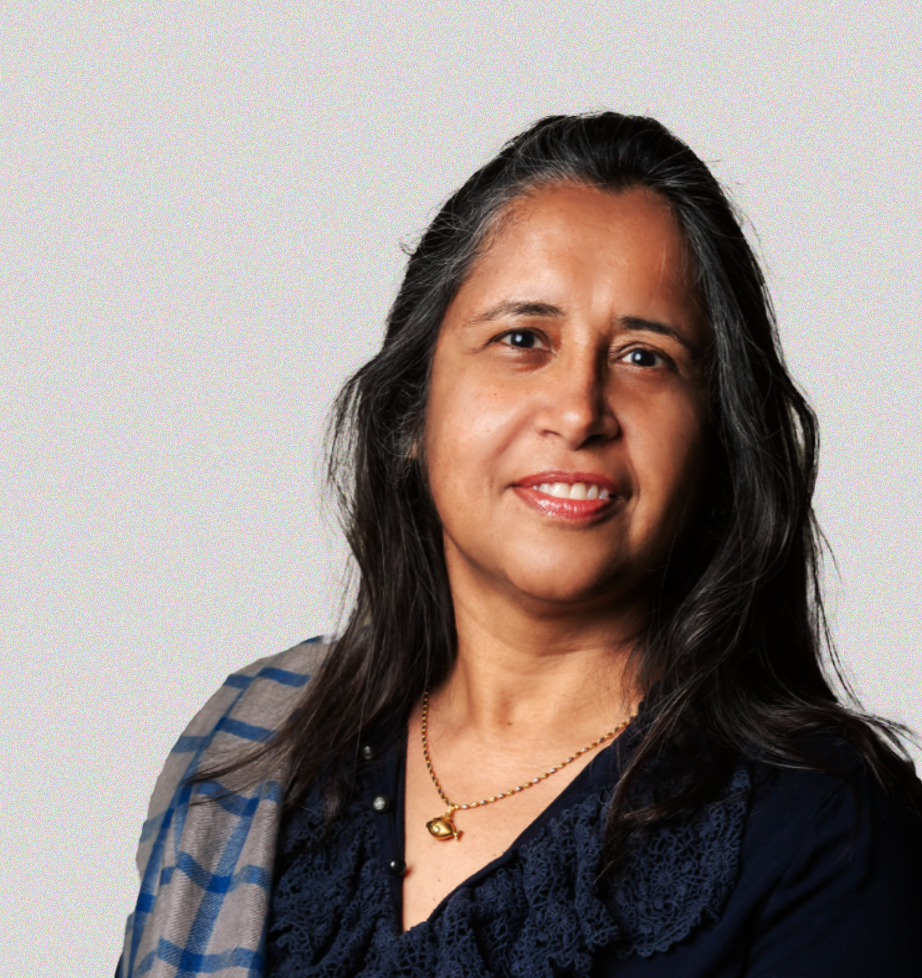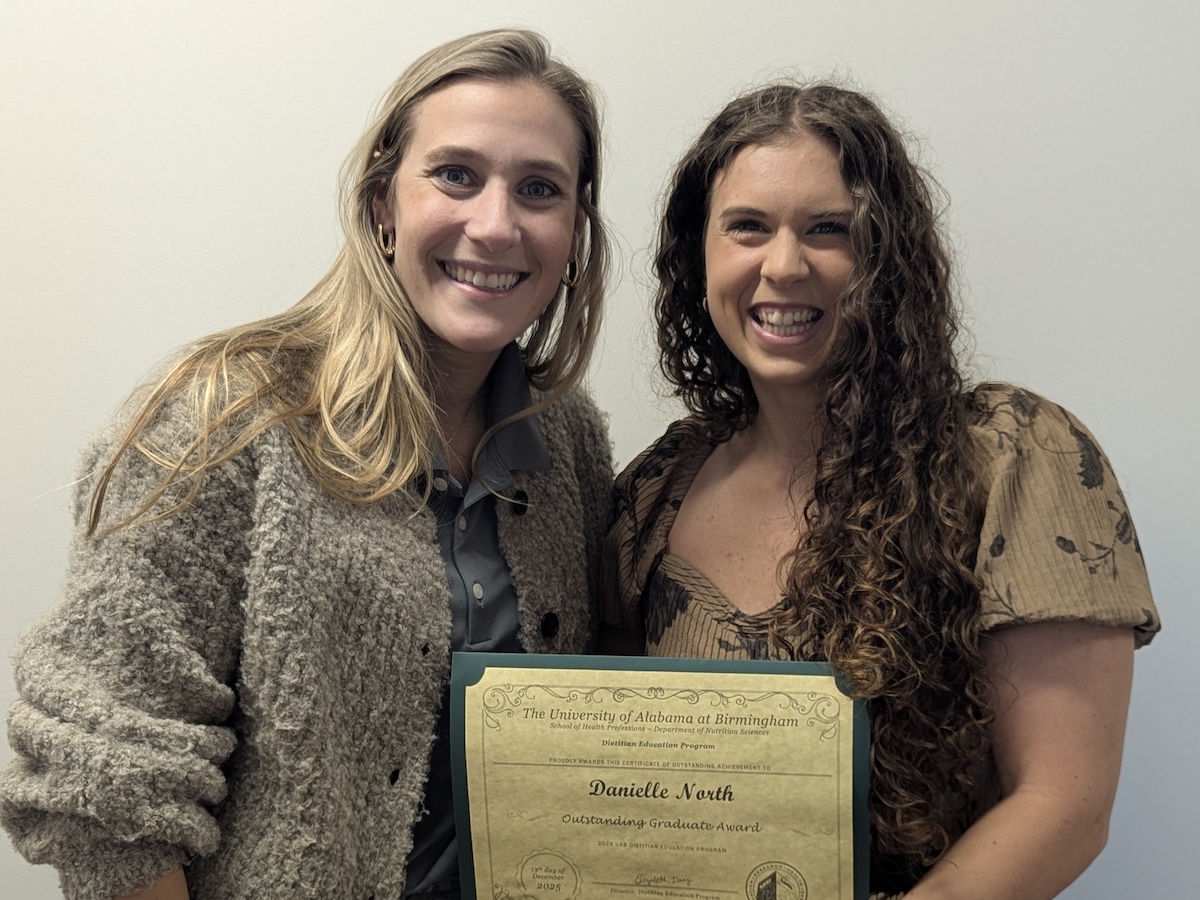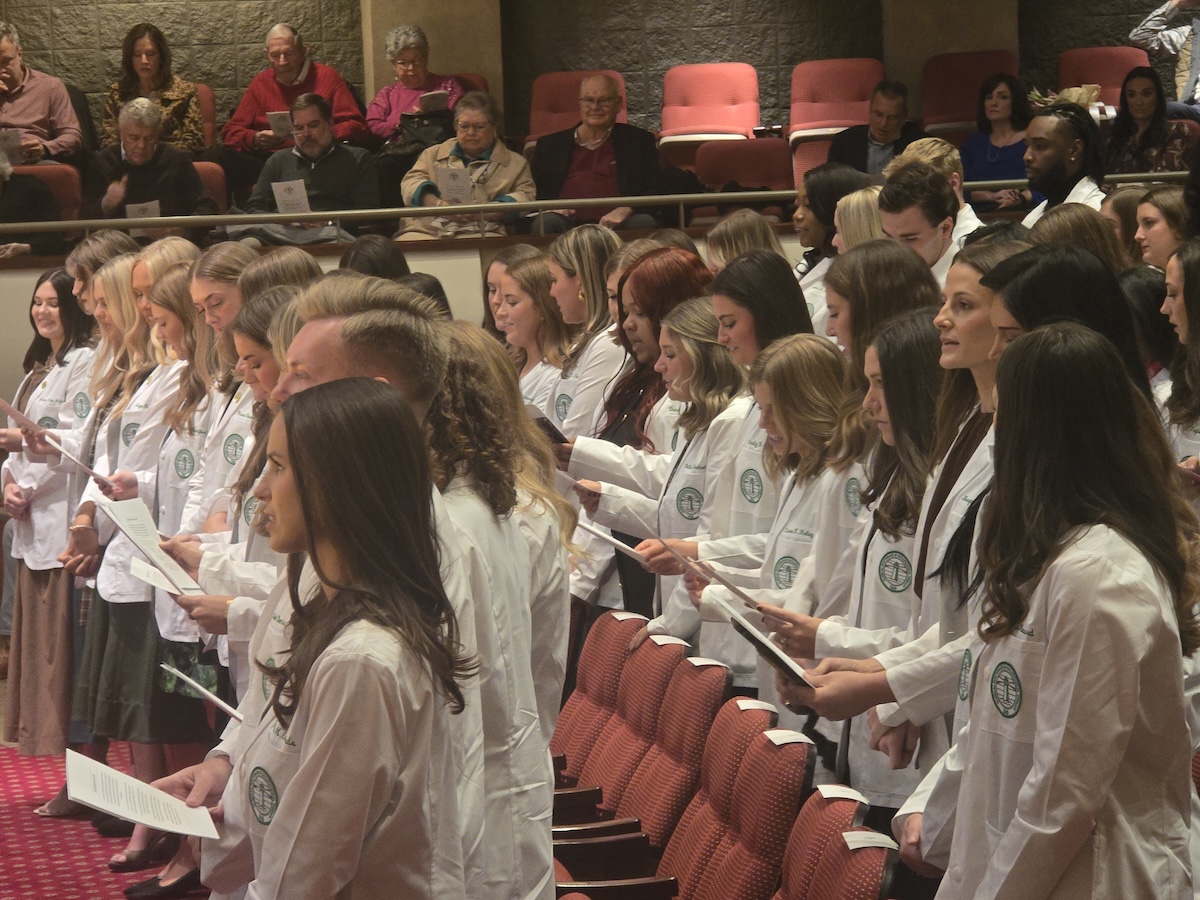 On April 1, 2022, Ritu Aneja, Ph.D., was named associate dean for Research and Innovation at the University of Alabama at Birmingham School of Health Professions.
On April 1, 2022, Ritu Aneja, Ph.D., was named associate dean for Research and Innovation at the University of Alabama at Birmingham School of Health Professions.
Upon her hiring, Dean Andrew J. Butler, Ph.D., said: “She is a proven leader who is committed to bringing out the best in all around her and being an exceptional role model to the dynamic research community here in the School of Health Professions. We are thrilled to have her join our family.”
We were fortunate to have an extended conversation with Dr. Aneja about a wide range of topics including why she chose UAB, how her work fits in with the SHP Strategic Growth Plan, collaboration plans, leadership styles and more.
Her answers are revealing, and at times vulnerable, and for that and so much more, we are grateful to have her in the School of Health Professions.
9 Questions with Dr. Aneja
-
It looks like you have been at GSU since 2008, for almost your entire career. What was it about this position that enticed you to choose UAB and the School of Health Professions?
This position felt like it was custom designed for me! It not only draws on all the skills and experience that I have gained over the years, it also aligns with my values, my beliefs, and the next steps I envision for the future by utilizing my scientific expertise, integrated perspective, and ability to bring people together in transdisciplinary collaborations to develop shared goals in service of the greater good.
This job aligns with the two things I particularly want to focus on. The first is mentoring junior faculty. I want to show them what works and what does not; help them manage time and balance research productivity with life, learn what it takes to develop collaborations, and encourage them to take ownership of what they really want to do. Perhaps the best way to say it is that I want to empower them and remove obstacles — those from institutional set-up as well as those they put on themselves. The second is growing convergence research as an approach and a way of thinking to solve pressing challenges that our world is facing- we can only solve large, complex problems when we come together and do away with silos.
UAB is a particularly fertile place for me to work on these goals. It is a rich, flourishing eco-system ripe for collaboration with its various centers, schools, departments, and institutes under the same roof with experts from so many fields. Perhaps what appeals to me most about UAB is the fact that we are far ahead of the curve in recognizing change and that these challenging times require new and different responses, ones that don’t grow out of the past; UAB is ready to “evolve and pivot” its goals and vision in alignment with the changing world. Complexity demands both convergence and agility, and UAB is rich in both.
-
We know this was a very competitive search. Clearly you have the skills needed to do this job. What is something that is not on your CV that you would like the SHP’s community to know about you?
One key thing CVs typically don’t convey is who people are and what they value. An important part of who I am — is how deeply I am committed to seeing ourselves as whole people, not simply as collections of publications, awards, and grants.
I feel a little vulnerable sharing something so personal, but these values grew out of hard lessons I learned in my own life. Early on, like many of us, I got caught up in hustle culture, pushing myself impossibly hard. Running from one thing to the next — there was no moment to assimilate and digest. I lost myself so deeply to the “doing” culture that I became burnt out, irritable, and stuck. Working harder just wasn’t working for me anymore!
Later it became clear that we are most productive when we balance hard work with rest, play and interpersonal relationships that nourish and nurture our whole self. Initially, I did not know there was another way where I could continue to make important contributions in research, training, and mentorship while still honoring myself as a whole person, one that I feel good about. I had this realization during a meditation retreat that I had to stop the “doing” and start “being”. It was transformational and I learned to change my way of “being” — the way I show up to my work and the way I relate to people.
I know now that a space of overwhelm pushes out creativity and innovation. I also know that nobody can do it alone. I foster collaborative relationships with the people I work with and lead, investing in people and interpersonal relationships first, for good work rarely grows out of negative relationships and workplaces. This belief is part of my commitment to convergence science, which is deeply grounded in collaboration.
-
Collaborations are key. What do you think is most important in creating and establishing collaborative relationships?
In collaborative relationships, I find that what matters most is not the content but the tone — the intention and mindset that drives our beliefs, attitudes, and behaviors. Our intentions behind what and how we communicate, go a long way to shape our interpersonal relationships at work and in life.
Trust, connection and feeling safe are very important. Trust grows when we communicate honestly and when we really understand and feel understood. That’s when we feel safe and connect and do our best work. When we don’t feel safe, our nervous system is dysregulated, our guards are up, and in these survival modes, nothing real can be created or accomplished. Fruitful collaboration requires psychological safety defined by inclusion and respect — a workplace where people feel empowered to speak their minds and handle the inevitable conflicts that arise in a healthy, respectful manner. Once people feel safe, they connect and engage, which leads to trust and belonging.
-
Research is one of the major points of the Dean’s strategic plan for our school with a goal of growing people and funding. What are your initial plans to meet his vision?
I see a tremendous opportunity for SHP to level up its research portfolio by integrating with UAB’s flourishing research ecosystem. As mentioned earlier, I am a strong proponent of convergence or team science. To tackle the multi-dimensional challenges facing our society, we need to remove the siloed approach and move towards a convergence of ideas, expertise, and technologies from all disciplines. The future belongs to team science, and I am excited to leverage UAB’s existing integration and shared resources to build new collaborations that take UAB’s research profile to the next level.
My initial plan is to map the existing research strengths of SHP and leverage them, then develop strategies to build institutional capacity and support for new and existing collaborations; and partnerships across departmental and school/college boundaries between UAB’s existing world-class research programs. In addition to connecting these existing strong research programs, I will work closely with junior faculty to help them set up collaborations and grow their lab research, as well as to mentor them through the complex terrain of academic research and funding. In a very specific sense, this will help raise the school’s research profile, its visibility, research publications, and garnering more grants.
My end goal is to promote SHP’s research enterprise and nurture transdisciplinary programs to collectively address complex challenges (such as health inequities), through basic, clinical, translational research combined with social behavioral sciences, public health and policy in collaboration with various stakeholders. I will work alongside SHP’s leadership to develop and publicize a cohesive research agenda for the school and its stakeholders, positioning SHP as a national leader in developing precise scientific solutions for a better, healthier world.
-
Managing researchers across five departments and the UAB/Lakeshore Research Collaboration is a very demanding and time-consuming responsibility. How do you plan to continue your own research?
I plan to continue my focus on breast cancer health disparities, a socio-biological problem that (like other existing health inequalities) has been made increasingly visible by the COVID-19 pandemic. I know it sounds like too much for one person to do, but in fact, my research program is already running in a very similar way to how I plan to run it at SHP. I am already handling high workloads managing multiple large complex projects in my lab; I do so using my skills at generating an empowering context and aligning team members and researchers in roles that match their strengths and interests which enhance productivity and team morale.
-
We heard you say that you will grow “convergence research”. What do you mean by convergence research, why do you think it is important and how do you think you are positioned to do so?
I believe in the power of convergence research to shape the future of health. The goal here is to create teams and teamwork toward the common goal of collaboratively addressing complex health challenges that are deeply entwined with social structures and existing health inequalities. The convergence of experts from multiple disciplines integrates the ideas, approaches and methodologies from multiple life science and social science disciplines, to bear on questions that are too big for any one discipline to solve in isolation. The foundation of interdisciplinarity that convergence science rests on has been part of my career from the beginning, but it was nothing I planned; it is a story of serendipity and adaptability, as I responded to each opportunity as it presented itself.
My training includes graduate training in India in chemistry, a postdoc at Yale in digestive diseases in the department of internal medicine, and a second postdoc at Emory in cancer cell biology, pharmacology and preclinical drug development. This breadth of experience has served me very well to evolve an integrated perspective and to speak multiple disciplinary “languages” — an important tool in leading convergence science and working with researchers from different disciplines, for these disciplines do not always share methods, key research priorities, or metrics for productivity.
-
Please tell us a little bit about your main area of research.
My laboratory is engaged in basic and translational research in breast cancer disparities, a complex sociobiological problem. A major thrust of our work is to understand why breast cancer outcomes differ between White and Black women in the United States. Most of our research projects converge on triple-negative breast cancer, an aggressive subtype of breast cancer that disproportionately affects Black women.
Our focus is on identifying biomarkers that can predict early on which breast cancers will be aggressive vs indolent and which ones will respond to chemotherapy. To do so, we utilize cell and molecular biology approaches guided by integrated multi-omics and multiplexed imaging technologies.
Innovation lies in the convergence of multiple disciplines to this problem: the goal is to combine biological determinants of patient outcomes with non-biological factors (patient demographics, race, lifestyle, comorbidities) using AI-based algorithms to develop an integrated predictive model for survival and treatment outcomes. These data will not only help identify hot-spots of cancer incidence but also enable us to target interventions more effectively and efficiently to the populations that most need them.
-
UAB and our school are big on collaboration. What are your plans to bring researchers from across our departments and across campus together?
This is what I’m most excited about — there are so many fantastic researchers and thinkers here, and there are so many incredibly generative and exciting possible collaborations! We will focus on identifying new research opportunities, encouraging research collaborations, and facilitating partnerships among faculty (both within and outside of the school/university) to help build and execute SHP’s strategic plan to realize our shared vision. First, I plan to spend time getting to know SHP’s faculty members, learning about their strengths and needs and finding out what they are most interested in, and discovering what is hindering them in accomplishing what they want to.
Therefore, “investing in people” will be a major part of my work. Sometimes that investment may take the form of appreciating, acknowledging, seeing, listening, and empowering them; at other times it may involve connecting them with others so that they can accomplish more together; and it may also at times entail supporting them, smoothing out institutional barriers, securing funding, etc. I will strive daily and give my best with the mission of making the entire school successful through making individuals, groups of researchers, faculty, staff and students successful.
-
What is your leadership style?
My plans for increasing the school’s research profile are grounded in creative, conscious, and collaborative leadership, which is rooted in connection, trust, and relationality. In having a “big picture” vision along with delegating and trusting people to do their job; I sweat the details, but do not micromanage. I can size up situations quickly, formulate a plan, and make things happen, while remaining open to adapting to counterarguments. I am a consensus-builder who gains buy-in through communication, open engagement, and accountability. I strive to create an authentic space where people feel safe to be honest and tell hard truths. I am on a mission to exemplify collaborative leadership, success, and productivity—for everyone!
I think of leadership in terms of “being” and “doing”: on any given day, who we are “being” matters much more than what we are “doing”. I want to bring these questions, and the answers that I find, to my work and collaborations at UAB — and hope to seed the desire in others to examine similar questions in relation to their own work and personal lives!
As COVID is teaching us all, leaders must be agile and ready to respond flexibly to ever-changing circumstances. My people-centric approach, and my goal of building diverse, inclusive, and connected teams are one way that I seek to “future-proof” institutions.
Lastly, I believe that at the heart of leadership is deep care. Since we all have things that we care about, we are all leaders in most situations — whether it is the lab, family, community group, or an individual passion project — we each lead in our unique ways. Leadership is also about taking total ownership of our actions and consequences. What I build, create, allow, as well as how people feel in conversations with me, will define my leadership. And how I respond to unexpected exigencies or sweeping changes — and how I help the institution respond to them with resilience and flexibility — will define my leadership.

